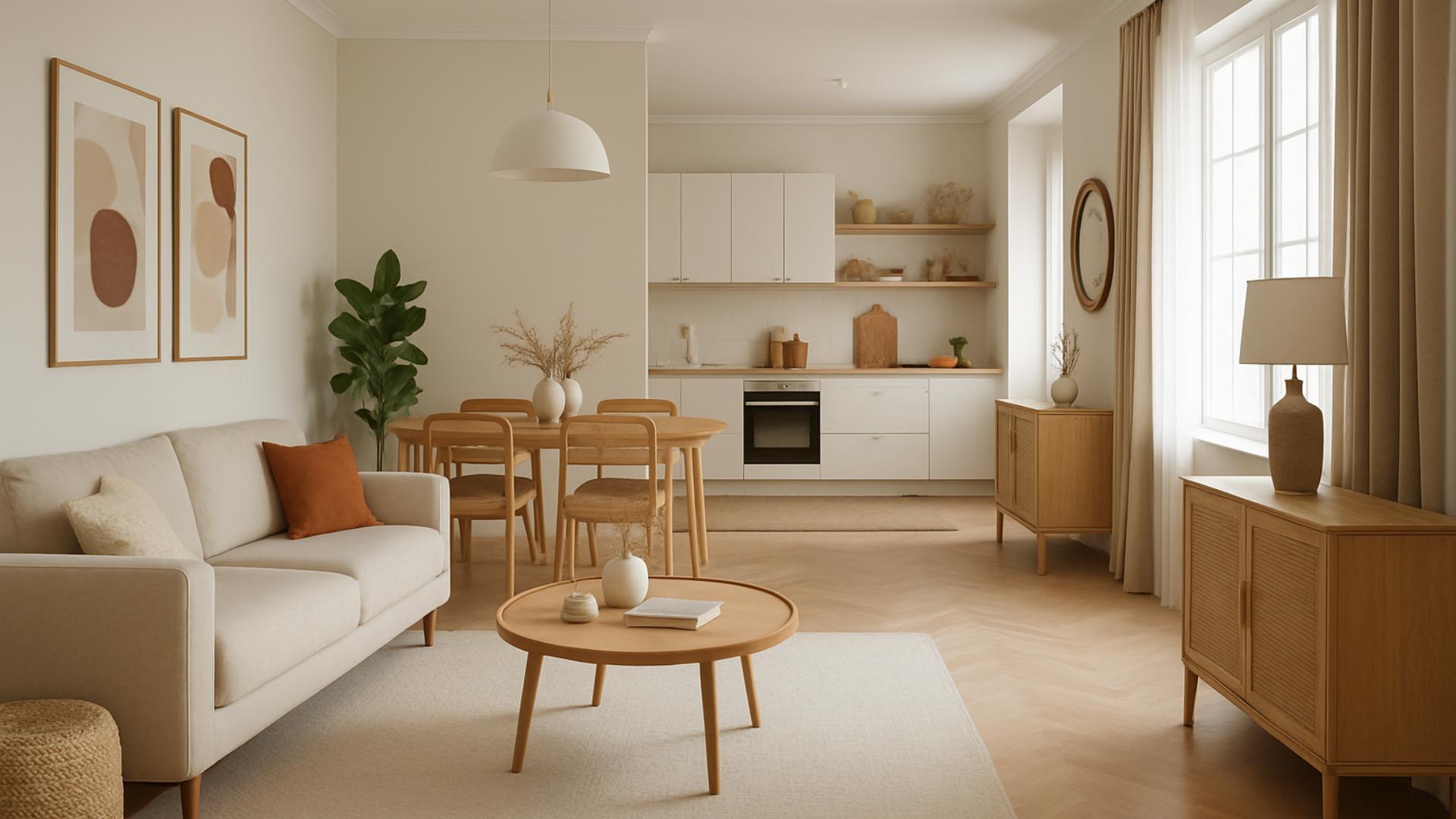In today’s living environments, open-plan designs have become increasingly popular, transforming the way we perceive space in our homes. The concept of an open living room seamlessly connecting with a kitchen or dining area invites a sense of freedom and creativity in our interior design. But how do we ensure each part of this expansive area serves its purpose while maintaining a cohesive look?
Welcome to the world of decorating open spaces with zones, a strategy that allows you to create distinct areas for relaxation, dining, and cooking without the walls. In this comprehensive guide, I’ll share insights on how to successfully create these zones using clever design ideas, furniture arrangement, and color schemes. Whether you’re planning a remodel or a simple refresh, let’s explore the art of zoning together.
Understanding the Concept of Zoning
Unlocking the Potential of Open Spaces
When we think of open-plan living, the first thing that comes to mind is versatility. These spaces empower us to redefine traditional boundaries, but they also require us to be more intentional with our design choices. In essence, zoning is about delineating areas within a larger room to serve specific functions while maintaining an overarching aesthetic.
The beauty of zoning lies in its ability to offer structure without the need for physical barriers. By using elements like furniture placement, lighting, and texture, you can effortlessly carve out distinct zones for different activities. Imagine a cozy seating area by the window, a functional kitchen nook, and a stylish dining space — each with its own personality yet harmoniously blending together.
Elements of Effective Zoning
To master the art of zoning, consider these key elements:
- Furniture Arrangement: Use pieces like sofas, rugs, or bookshelves to subtly define each zone.
- Lighting: Employ different light sources, such as pendant lights over a dining table or a floor lamp in the reading corner, to emphasize separate areas.
- Color Schemes: Select a cohesive palette but play with varying shades to highlight individual zones.
- Textures and Materials: Introduce diverse textures through fabrics, flooring, and wall treatments to create visual interest.
Each of these elements can act as invisible walls, helping you maintain order and functionality within your open space.
Crafting a Cohesive Living Area
Breathing Life into Your Open Plan Living
The living room often serves as the heart of an open-plan home. It’s where we gather, entertain, and unwind, making it essential to design a space that feels inviting yet organized. The key is to strike a balance between openness and intimacy.
Begin by considering the flow of the area. Arrange your furniture in a way that encourages movement and interaction. For instance, position your sofa and chairs towards the center to create a focal point for conversations. Add a statement coffee table and layer rugs to define the seating zone.
Infusing Personality with Decor
Decorating your living area is an opportunity to express your personal style. Select a color palette that complements your home while incorporating bold accents for a modern touch. Consider textures like velvet cushions or a woven throw to add depth.
Incorporate art pieces and books that resonate with your interests, creating a storytelling element in your space. A gallery wall can serve as a captivating backdrop, while plants bring a touch of nature and vibrancy.
Remember, the goal is to create a harmonious yet distinctive living zone that encourages comfort and connection. {image_content}
Designing a Functional and Stylish Kitchen
The Heartbeat of the Home
In an open-plan setup, the kitchen transforms into more than just a space for cooking; it becomes a living hub. The challenge here is to ensure it melds seamlessly with the rest of the area while boasting its own character.
Start by analyzing the layout. An island or peninsula can act as a natural divider, offering both workspace and informal dining. Use sleek cabinetry for a clutter-free look, and consider integrating modern appliances that blend into the design.
Creating Visual Harmony
Maintain continuity by extending your color scheme from the living room to the kitchen, using complementary hues. For instance, a neutral palette accented with metallic fixtures or bold tiles can elevate the space.
Lighting is crucial in a kitchen. Pendant lights over the island or under-cabinet lighting can highlight your culinary zone while adding a touch of elegance.
Texture plays a role too – think marble countertops, textured backsplash, or wooden bar stools to add interest and personality.
Ultimately, your kitchen should be a functional masterpiece that aligns with the open-plan ethos, promoting ease and efficiency.
Elevating the Dining Experience
The Essence of Gathering
The dining area holds a unique position in an open-plan design, serving as a bridge between the kitchen and living spaces. To craft a dining zone that commands attention, focus on creating an intimate yet impactful setup.
Start with a table that fits your lifestyle, whether it’s a round table for cozy dinners or an extendable option for larger gatherings. Surround it with chairs that offer both comfort and style.
Enhancing Atmosphere Through Design
Consider the power of lighting to set the mood. A grand chandelier or a series of pendant lights can transform your dining area into an elegant focal point.
Incorporate decorative elements like a statement centerpiece or arrangement of candles to inject personality. Wall art or mirrors can add dimension and reinforce the dining area’s aesthetic.
Don’t forget about the flooring; a well-chosen rug can anchor the table and define the dining zone, adding an extra layer of warmth and coziness.
By thoughtfully designing this space, you create a dining experience that invites conversation, enjoyment, and memorable moments.
Unleashing the Potential of Open Spaces
Decorating open spaces with zones is an art that transforms chaos into order, allowing you to enjoy the best of both worlds — the freedom of an open plan with the functionality of designated areas. By thoughtfully employing design principles and embracing creativity, you can craft a living environment that resonates with your lifestyle.
Remember that the essence of zoning lies in balance and synergy. Whether it’s the comforting embrace of a well-designed living room, the efficiency of a kitchen, or the charm of a dining area, each zone should contribute to a cohesive whole.
With the right blend of furniture, color, and texture, you’ll create an open space that not only meets your needs but also reflects your personality. So embrace the potential of your home and transform it into a canvas where every zone tells a story of its own.
FAQ
What are the primary benefits of creating zones in open spaces?
Zoning an open space allows for better organization, improved functionality, and enhanced aesthetic appeal. It helps in defining specific areas for different activities, making the space more versatile and user-friendly.
How can I start planning zones in an open space?
Begin by assessing the space’s dimensions and identify potential areas for zoning. Consider the activities you want each zone to serve, such as dining, lounging, or working. Sketch a rough layout to visualize the division and flow between different zones.
What furniture should I consider to effectively delineate zones?
Utilize furniture pieces like sofas, bookshelves, or room dividers to create natural boundaries between zones. Pieces like rugs and lighting fixtures can also help visually separate areas and establish distinct zones without physical barriers.
How can I use color and texture to define different zones?
Incorporate varying color schemes and textures to signal a change in function between zones. For instance, use soft hues and plush fabrics in relaxation areas while opting for brighter colors and sleek materials in active zones to differentiate them.
Are there any tips for maintaining a cohesive look while zoning an open space?
Maintain a unified design theme by choosing complementary colors and styles across all zones. Incorporate similar materials or repeating patterns to create a harmonious flow, even as each zone serves a distinct purpose.



